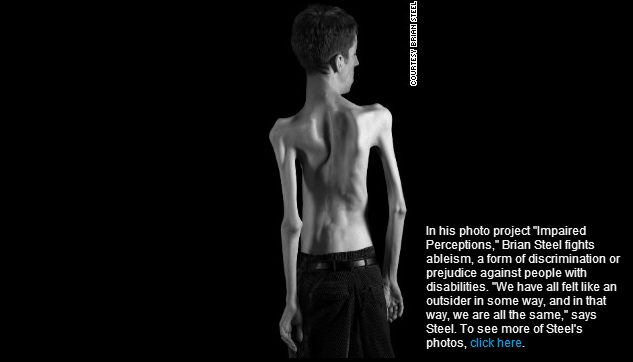I’ve got a lot to cover, so I’m breaking it down into two pieces. In the first piece (today), I’m going to focus on the way liberals and conservatives (speaking loosely) view this issue and view each other. In the second piece (Wednesday), I’m going to critique some of the most prominent policy proposals and then suggest my own. [Update: Part 2 is now live.]
Clash of Civilizations
Conspiracy theories, distrust, and demonization all flourish when you perceive your enemies to be truly alien. This is why the gun debate is divisive: it cuts along one of the deep fault lines between the cultural tribes of the American right and left. Before diving into the competing viewpoints, I want to take you on a quick tour of news stories that show just how deep and wide this chasm is.
For starters, consider the number of sheriffs and sheriff organizations that have pre-emptively stated that they will either not enforce new federal gun laws, or will even go so far as to arrest federal officials who attempt to enforce new laws. When I Googled “sheriff won’t enforce gun laws”, I got these stories from North Carolina, Texas, West Virginia, Colorado, Utah and Montana, and that was just the first seven results. The angry rhetoric from sheriffs, usually the top law official in a county, represents the extent of rural anger at perceived threats to their rights—and their way of life—from urban power centers.
Now consider the story about a New York state man who was stopped for a routine traffic violation and then arrested because he had 5 magazines for an AR-15 in his car. As far as I can tell he didn’t have an AR-15, or a weapon of any kind, and the magazines were not loaded. Despite this fact, he now faces five counts of criminal possession of a weapon. Here’s what a friend of mine on Facebook, who shared the story, had to say about it:
a sad, sobering thought – that this man will be going to prison for doing something I can do every day, in the free part of the US that I live in. I feel bad for those living in the locked down, police-state sections of our nation. So he owns 5 gun magazines (the part that holds the cartridges). Wow. I’ve carried 30 of the same type mags in my car, just going for a day of shooting out in the country. Him: years in prison. Me: a free man. If people start shooting back instead of being hauled off to prison, it will be sad but understandable.
In another story, this one from Oak Harbor, Washington, a young, disabled veteran named Lucas attended a town council meeting where he spoke in defense of second amendment rights. During his comments, he stated that he was a trained professional who carried a gun wherever he went so that he could protect those around him. After he concluded his comments, one of the council members asked if he was armed at the moment. The attorney for the city council said that Lucas didn’t have to answer, but he did anyway. He said that he was armed. The council man motioned to ban firearms from the meeting, and when the motion failed he picked up his papers and walked out of the meeting. The council’s attorney then pointed out that even if the motion had passed it wouldn’t have been enforceable because it’s illegal for local gun laws to supersede state laws in Washington, and then the mayor apologized to the veteran.
http://www.youtube.com/watch?v=kKpLhNiC8zg#!
I did some research into the story to try and explain the strange behavior of the council man to propose an illegal law and then walk out of the meeting. It turns out that the context is that small towns in Washington recently lost a series of court cases that invalidated their individual anti-gun laws. In Oak Harbor the council opted to just ignore the unenforceable laws rather than formally repeal them, but that wasn’t enough for the gun rights crowd. As one man said (reported in the LA Times):
If you’re black and there’s a law saying you have to ride in the back of the bus, you’d be happy with somebody saying they’re not going to enforce it? It doesn’t pass the smell test.
Then there’s the case of a Florida man who was pulled because his van had expired stickers. While placing his wallet back in his pocket, he inadvertently revealed the concealed handgun he is licensed to carry. Despite showing no hostility or threat whatsoever, the officer responded by drawing his weapon, pointing it at the man, and screaming that he would shoot the man him “in the f***ing back.”
Florida has a specific law to prevent people who accidentally and briefly show their concealed gun from being prosecuted, but he was arrested and charged anyway. It took more than 2 weeks for the district attorney to drop the charges. I’ll contrast this with my own experience when I was pulled by a Hanover County sheriff in Virginia for the same reason: expired stickers. When the officer came to my window I calmly told him that I had a concealed carry permit and was carrying. He asked me where, and I told him. Then he said “OK” and that was the end of that topic. He let me off with a warning and told me to have a nice day. No drawn gun, no screaming, no threats, no arrest.
Americans who have a connection to the rural parts of the country view weapons as tools. They know how to handle them, they are used to seeing them, and when they see someone walk into a grocery store with a handgun on their hip they consider it normal, decent, civilized behavior. And, yes: there are plenty of places in the United States where people really do go grocery shopping or stop for gas with a holstered gun riding on their belt. But to a lot of Americans the idea of going about your day-to-day business while wearing a gun is horrifying, anti-social, and barbaric.
In recent years this chasm has grown larger, not smaller. Starting in the 1990s, gun rights advocates began an overwhelmingly successful campaign to overhaul concealed carry permit laws. In 1986 there was 1 unrestricted state (Vermont), 8 shall-issue states, 25 may-issue states, and 16 no-issue states. The term “shall-issue” means that a state will give every citizen who meets certain requirements a concealed carry permit, but in “may-issue” states it’s up to the discretion of law enforcement officials. In practice, this has usually meant that ordinary citizens without political connections can’t get a permit. On the extreme ends, unrestricted states don’t even require a permit to carry a concealed weapon, and no-issue states don’t allow any private citizens to carry concealed weapons. By 2011, there were 4 unrestricted states, 37 shall-issue states, 8 may-issue states, and Illinois remained the solitary hold-out no-issue state.
 This represents a complete reversal of one of the most sensitive and emotional aspects of the conversation on guns and violence, but for some people it’s not enough. Groups like Virginia-based OpenCarry.org have gone beyond concealed carry to open-carry. Spurred by a belief that “a right unexercised is lost”, the open-carry movement has the specific goal of normalizing the practice of open carry in everyday life.
This represents a complete reversal of one of the most sensitive and emotional aspects of the conversation on guns and violence, but for some people it’s not enough. Groups like Virginia-based OpenCarry.org have gone beyond concealed carry to open-carry. Spurred by a belief that “a right unexercised is lost”, the open-carry movement has the specific goal of normalizing the practice of open carry in everyday life.
The movement made headlines early on in the first Obama administration when adherents began legally taking guns to political rallies. This led to one infamous incident in which MSNBC—anxious to continue their characterization of the open-carry elements of the Tea Party as racially motivated—carefully cropped footage of an African American man with an AR-15 slung over his shoulder to hide his race while the correspondents wondered “whether there are questions that this has a racial overtones… because there are white people showing up with guns”. Just to reiterate, the man with the white shirt and the rifle on his back was in fact Africa American, not white, and the video had been deliberately cropped by MSNBC to conceal that.
Despite the widespread publicity at the time (2009), NPR appeared very confused when a similar incident occurred just this month in Charlottesville:
Bob Girard got a shock when he stopped in the Kroger store on his way home from work: A 22-year-old man wearing a baseball cap and a blue jacket was strolling through the supermarket with a rifle slung from his shoulder.
“People saw the gun. It was pretty easy to spot. He wasn’t concealing it,” Girard says. “It was right out in the open, and he created a reaction in the store.”
Some customers bolted for the door. Others grabbed their cellphones and called 911. Lt. Ronnie Roberts, a 30-year veteran of the Charlottesville police force, says eight officers went to the scene, ordered the man to drop his gun and searched him.
Charlottesville, a liberal college-town nestled in rural western Virginia, is a perfect example of the frontier between the liberal/urban and conservative/rural tribes. They interviewed a police officer from within Charlottesville who said, “It alarmed us. It alarms law enforcement.” But in the same story they also talked to the chief of police of Albermarle County, which surrounds the college town, and he said “Unconcealed weapons have been permitted in rural parts of this state. That’s pretty common, to see somebody wearing a gun.”
NPR seemed equally disconcerted the following morning when covering a public service announcement from a Milwaukee sheriff informing citizens “you have a duty to protect yourself”. A Daily Kos commenter responded to NPR’s coverage saying:
I find it very disturbing that residents of certain areas could be visiting businesses in their community and find themselves in a situation where another customer is carrying a loaded gun. Something should be done about this
Something should be done, in other words, about how the rural half of America goes about their daily lives.
All of these stories hammer home a couple of central points. First: the laws regarding guns have changed fundamentally in just the past couple of decades and continue to be staggeringly diverse from place to place. Second: underlying these legal fault lines are opposing cultural views of guns that have almost nothing in common.
Fundamentally Divergent Views
To conservatives, guns are powerful symbols of American heritage, tools of self-reliance, and also sources of entertainment and bonding with friends and family. To liberals, guns are a scary vestige of a less-civilized era and a necessary evil at best. As a consequence, the two sides have entirely different paradigms when it comes to questions of gun control.
The Liberal Vision – Public Health
The basic liberal argument comes from public health policy. Guns kill people. The solution, therefore, is to get rid of guns. Although violent crime rates and accidental gun death rates are at historically low levels and falling, the public health perspective remains a reasonable one. The presence of a gun in a household significantly increases the risk of suicide especially. Furthermore, while there is no evidence that gun regulation laws to date have impacted violent crime rates, a massive reduction in the availability of guns would obviously lead to lower murder rates since it’s harder to kill people with knives and swords than with guns. This does happen, however, and it’s not a joke. Just days ago in England, a 16-year old boy was attacked by a street gang armed with knives and yes, swords. Bystanders say “he screamed for his life” as he was fatally stabbed.
When conservatives say that liberals want to seize all guns, they are ridiculed, but it is the logical end of a view of gun control as a public health problem. I’ve been derided as a conspiracy theory nut for suggesting that some Democrats might want to ban and confiscate all guns, but this is exactly what Senator Feinstein (author of the newest assault weapons bill) has publicly stated she would like to do. Speaking on 60 Minutes in 1995 (after the first ban was passed), she said “If I could have gotten 51 votes in the Senate of the United States for an outright ban, picking up every one of them . . . Mr. and Mrs. America, turn ’em all in, I would have done it”.
This sentiment is echoed again at the Daily Kos, where a writer says plainly:
The only way we can truly be safe and prevent further gun violence is to ban civilian ownership of all guns. That means everything. No pistols, no revolvers, no semiautomatic or automatic rifles. No bolt action. No breaking actions or falling blocks. Nothing. This is the only thing that we can possibly do to keep our children safe from both mass murder and common street violence.
How will this be accomplished?
The very first thing we need is national registry. We need to know where the guns are, and who has them.
Now, just to be clear, I’m not saying that there’s a conspiracy afoot. The liberals who want to ban guns are not being quiet about it. There’s no secret cabal. They are quite happy to have their plans out there in the open. And so when I meet a liberal who says that he or she doesn’t want to ban guns, I don’t assume they are lying. I think they are being sincere. But, fundamentally, I don’t think that it’s a stable proposition. Once you adopt the public health paradigm for dealing with guns, a total ban (or something very close to it) combined with mass confiscation is the only reasonable stopping-point. It doesn’t really matter what gun control proponents intend, the logic–once you adopt this position–is inescapable.
Talking about the tradition of sportsman or hunters is not a legitimate compromise position, either. Once the only remaining rationale for guns is based on peripheral lifestyle choice—as opposed to civil rights—there’s basically nothing left. This is a major reason why I’m not impressed by liberals who say that of course they don’t want a gun-ban because they “shoot all the time” or “grew up around guns”. That’s the Second Amendment version of trying to tell me that some of your best friends are black.
This is not to say that there are no laws that can be enacted to improve the situation we currently live in, and I will discuss those tomorrow, but with a few exceptions the kinds of laws being bandied about on Facebook or in Congress are so fundamentally flawed that they serve only as gratuitously empty symbols. (Conservatives are hardly any more honest about the issue and–again–we’ll get into the details of the policy on Wednesday.)
The Conservative Vision – Civil Liberty and Duty
Conservatives do not look at the gun control issue from a public health standpoint, but from the standpoint of rights. Whenever liberals patronizingly talk about the importance of guns to hunters, they only highlight their disconnect with the people with whom they are claiming to empathize. While it’s true that conservatives are generally fond of hunting, that doesn’t mean that they think the Second Amendment is about nutrition.
This isn’t to say that the Constitution provides an unambiguous explanation of the basis for the Second Amendment. It doesn’t. Nor were the Founders anything like unanimous about this issue (or any other). Despite this, however, there was a consensus among many of the leading Founders. In addition to Thomas Jefferson (the perennial revolutionary), Washington and Madison also spoke eloquently on the role of an armed populace. The argument breaks down into basically two components.
First, every human being has a natural right to individual self-defense. Practically speaking, this means you have a right to be armed with the kinds of weapons you are likely to face. In our world, this means that as long as criminals can reasonably be expected to be able to acquire firearms, citizens have a right to have firearms that are at least as effective as what they might face.
Secondly, an armed populace is an important element of a communal self-defense. This functions both against potential invaders—not that there are any looming on the horizon these days—but also against internal dangers. A well-armed populace is an integral part of the elaborate system of checks on centralized government power that protects our communities from oppression.
This does not mean that civilians ought to have firepower equal to or greater than the standing army. As far as I know, the Founders never intended for their citizens to own and maintain canons or mortars in their private homes, and the idea that a group of private citizens could field a credible military opposition to the combined might of the United States military in any conventional sense has only grown less realistic since the Revolution.
The objective is not to help citizens succeed in a violent confrontation with the state. It’s to avoid violent confrontations with the state. Authority tends to corrupt, and it is in the nature of all government officials to protect themselves at the expense of ordinary citizens. This is why most of the worst government abuses come from an initial mistake that is then compounded by an abuse of power to cover up the incident and protect those in power. The function of an armed citizenry is to raise the stakes significantly such that government cannot easily and quietly trample liberties. It must do so publicly and violently, and this makes it dramatically more expensive politically. (This is the expensive lesson that was not learned at Ruby Ridge but was finally driven home during the Waco siege.)
This article is already going to be very long, so I’m not going to provide a bunch of quotes here. I will include only one, and it’s quite modern:
By calling attention to ‘a well regulated militia’, the ‘security’ of the nation, and the right of each citizen ‘to keep and bear arms’, our founding fathers recognized the essentially civilian nature of our economy. Although it is extremely unlikely that the fears of governmental tyranny which gave rise to the Second Amendment will ever be a major danger to our nation, the Amendment still remains an important declaration of our basic civilian-military relationships, in which every citizen must be ready to participate in the defense of his country. For that reason, I believe the Second Amendment will always be important. (John F. Kennedy, 1960)
This right comes with a cost. The crime statistics are very debatable. Liberals will tell you that guns are used to kill good guys far more often than bad guys, and that is definitely true. But it is also misleading, because a gun can save your life without killing anyone else. If someone tries to kill you or your family and you use a gun to scare them off or wound but not kill them, then your gun has saved at least one life, but no one has died. That doesn’t show up in the statistics. So yeah: guns will kill more good guys than bad guys, but the relevant question is do they save more good guys than would be saved if they were illegal? That’s impossible to know and very, very difficult to estimate. But the suicide stats are pretty solid: keeping a gun in the home increases your risk of suicide because it allows you to quickly and effectively take your life in ways that you simply can’t without a firearm. Finding a building to jump off of, making a noose, swallowing a bunch of pills: all of these require more time and effort or allow for a reconsideration after the fact. A bullet to the head does neither.
But that’s the public health perspective and, while part of the equation, it’s not the full story. Conservatives believe that in the long run an armed populace preserves our rights and therefore benefits us all greatly and that the appropriate question is how to best regulate this right so that it remains vibrant and strong while doing the least possible harm. This isn’t a unique question. It’s the same question we ask of all our civil liberties.
Next time…
In this post I talked about the different paradigms used by conservatives and liberals for approaching gun regulation. I think it’s clear that my sympathies lie with conservatives, although I do not believe it is fair or accurate to demonize the liberal position as being about lust for power or a repudiation of American values. The public health perspective is reasonable and ought to be a legitimate part of the debate, and care for our children and our neighbors is even more essential to the American ethos than guns.
On Wednesday, I’ll continue this discussion with a post focusing on the policies–legal and voluntary–that can and cannot help allevaite gun violence in our nation.
 Perhaps you did not realize this fact, but there is a hole in your life where an authentic Lutheran insult-generator should be. Now that you have this link, the void is filled. And now that the void is filled, you will realize how much you have always wanted to be able to tell someone who cuts you off in traffic:
Perhaps you did not realize this fact, but there is a hole in your life where an authentic Lutheran insult-generator should be. Now that you have this link, the void is filled. And now that the void is filled, you will realize how much you have always wanted to be able to tell someone who cuts you off in traffic:

 So the cops in Seatle decided to do a gun buy-back this past Saturday (Jan 26). They were offering $100 for shotguns, rifles and handguns and $200 for “assault rifles”. What with gun prices being what they are and a lot of folks deciding to stock up out of fear of impending gun-control regs, a bunch of enterprising gun collectors showed up with homemade signs offering to outbid the cops if they liked your gun. What’s more, the cops were handing out Best Buy gift cards, and the gun collectors were paying in cold, hard cash.
So the cops in Seatle decided to do a gun buy-back this past Saturday (Jan 26). They were offering $100 for shotguns, rifles and handguns and $200 for “assault rifles”. What with gun prices being what they are and a lot of folks deciding to stock up out of fear of impending gun-control regs, a bunch of enterprising gun collectors showed up with homemade signs offering to outbid the cops if they liked your gun. What’s more, the cops were handing out Best Buy gift cards, and the gun collectors were paying in cold, hard cash. The Daily Kos poster was horrified: “I have to admit I am sort of shocked at the effort these guys go through to prevent guns from being taken out of circulation/off the streets.” The
The Daily Kos poster was horrified: “I have to admit I am sort of shocked at the effort these guys go through to prevent guns from being taken out of circulation/off the streets.” The 



 There have been quite a few articles detailing the
There have been quite a few articles detailing the 